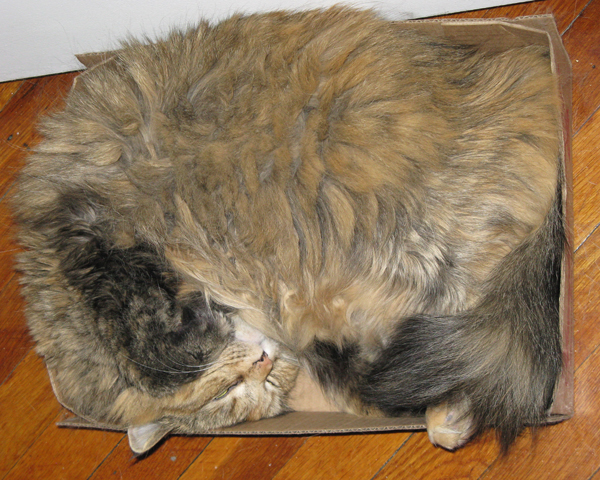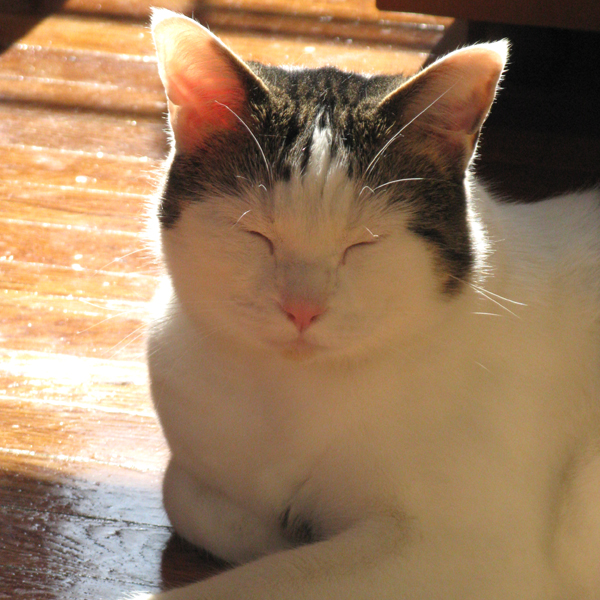As anyone who follows this blog knows, outdoor cats are a veritable holocaust for wild birds, small mammals, reptiles, amphibians, and even insects. Almost every single outdoor pet cat, feral cat, or stray kills other animals, no matter how well fed the cat is through other sources. Trap-neuter-release programs sound nice and let folks think that they are doing good but they actually often add to the problem, and never reach the goal of zero feral cats in an area. But this blog post is not meant to focus on all of those issues, no, this blog post is meant to convince you to make your cat an indoor cat and provide access to resources that will assist in converting your cat from an outdoor cat to an indoor cat, a step which will save innumerable small creatures that would otherwise end up stalked, killed, and eaten by your fluffy bundle of love and may just save the life of your pet as well.
I can remember when I was a kid we always had a bunch of cats that had the freedom to go in and out as they pleased and I can remember the dead things they brought home, everything from mice to snakes to baby bunnies to birds. I can also remember the fleas they brought home to share with us and the wounds they would get from unknown sources. We were fortunate enough to live on what was essentially a dead end back road so our cats did not have much traffic to contend with, and, so far as I know, none of our cats were ever lost to predation, but, nonetheless, I think we and our cats would have been better off had our cats been indoor cats. Certainly we would not have had to occasionally “flea bomb” our home with chemicals to kill the bugs. (My mom will probably kill me for acknowledging to the world that sometimes our cats brought fleas home!)
But, one might ask, isn’t it virtually impossible to take a pet cat that is used to wandering freely out-of-doors and make it an indoor cat? I won’t lie and say it is a piece of cake but I will say that it can be done and that there are a host of resources available to help you make the adjustment. For those who live in the northern hemisphere we are coming up on the ideal time to have your pet make the transition because once the weather turns cold your cat won’t want to be outside as much anyway, making it far more simple to cut back the short, infrequent, winter visits outside to no out door time at all. And giving your cat a much longer life expectancy is well worth a little bit of effort!
From what I have read there are several basic things that every indoor cat needs, and the list below is adapted from the excellent one on the website of The Ohio State University College of Veterinary Medicine. Their Indoor Cat Initiative has a ton of great information and even a DVD you can order! If all of your cat’s needs are met there should be no long-term problem keeping the cat indoors.
- Litter Boxes: At least one litter box per cat, cleaned out daily.
- Something to Scratch: If you don’t provide a scratching post your furniture will be sacrificed.
- Somewhere to Sleep: Quiet, out-of-the-way spots that a cat can feel secure in are key.
- Somewhere to Perch: Cats like to know what is around them. If they aren’t given something to climb on your kitchen table will work nicely too.
- Toys: Wouldn’t you be bored if you were inside all day with nothing to do? Well, your cat is no different!
- Attention: They are your pets so pet them! Play with them! Appreciate them! If you don’t they will find some way to get entertainment that you will not like one bit!
So how does one make an outdoor cat an indoor cat? Below is a list of resources that will help you and your pet make the transition. The first two are especially helpful in making the transition.
American Bird Conservancy – The Cats Indoors! Campaign
The Ohio State University College of Veterinary Medicine – Indoor Cat Initiative
Community Animal Welfare Society: Indoor Cats Live Longer
And if you still can’t manage to make the transition but want to keep your cat and wildlife safe you can always try something like this!
So keep your cat indoors because both you and your pet will be happier, healthier, and enjoy more time together!
(This post was first published in September 2009, but a message this important should be shared often!)















we have the most wonderful “flat cat” (one that lives in an apartment, not one that fought a losing battle with a large road-construction machine) – she has plenty of space inside and on the balcony and lots of great spots to perch and sleep.
btw, how is the little one doing?
@Dale: Still have about six weeks to go…
I once knew a birder who was the bane of his neighborhood. While everyone else had pet cats, he had a pet Great-Horned Owl (in the days before permits). Each night he would let his owl out to hunt, and this owl had quite a taste for cats. He said he would have gotten away with it all, if his owl had been caught by the local judge taking his cat!
Moral of the Story is, if you have a problem with cats outdoors, teach your neighbors to keep them in by getting a Great-Horned Owl!
Thanks for posting this, it’s a message that definitely needs to be put out there.
We have two indoor-only cats. Letting them outside wasn’t even an option when we got them – I knew the danger they posed to wildlife. But we’ve come to adore these kitties, and now we keep them indoors as much for their own safety as that of other animals. After you grow so attached to them, you really want to keep them around for an extra 10 years or so (on average).
@Will: That is so messed up…though maybe for feral cat colonies…
@Grant: Glad you liked it. And I know how you feel about wanting to keep your cats around. Not only are they friendly and wonderful to be around but they keep my feet warm in the winter too!
Thanks for this post Corey! I hope it results in fewer outdoor animal killers.
If you not only go out to look at and for birds but also notice or specifically search for animal spoor (tracks, signs etc.), you’ll probably notice that feral cat tracks are amongst the most commonly found predator tracks even away from settlements. At least that’s the case here in Germany and I presume it won’t be any different over most of Europe and North America.
And that’s a bit scary.
Not only are all my cats indoor cats, I pick up random cats on the street and make them indoor cats! Do I get bonus points?
I don’t know if you get bonus points, Carrie, but if you’re not careful, you’re likely to get fleas.
I live in the city of Burnaby, BC next to a conservation area which although small shelters some wonderful birds (incl. Pileated Woodpeckers, Ravens, various raptors). A Great Horned Owl comes around from time to time, booming away outside my window, and there are coyotes too – one trotted past me the other day. I like to think they’re doing their part in naturally controlling feral cats. We also have a bear in the area but I don’t think cats are on their menu much.
Sadly some folks in my townhouse complex let their pet cats outdoors at all hours. They just don’t get it!
Susan: if the neighbours don’t get it, maybe the owls will?
😉
Ella is still going strong, saved from the superfund sites of Endicott after all these years . . . .
I live alone and work 8-6. I recently picked up a stray cat, and wonder if she can be an indoor cat, not only because she likes the streets so much, but because she’ll be home alone all day long. 🙁
@Edith: I honestly don’t know but I wish you the best of luck helping the cat make the transition.
@Corey: thank you. I will give it my best. I already bought her plenty of toys, and I hired someone to make my tiny backyard cat-proof.